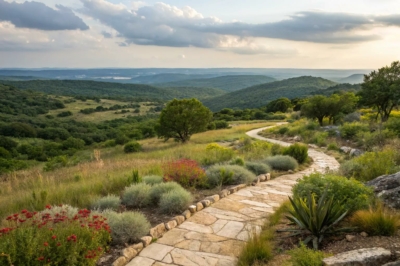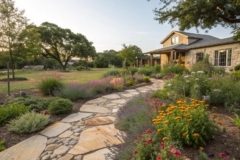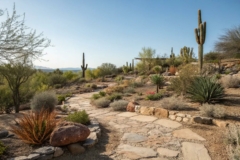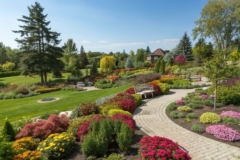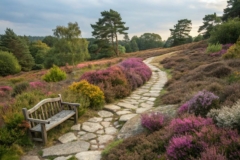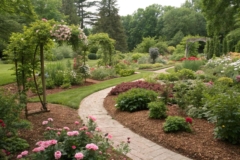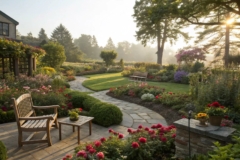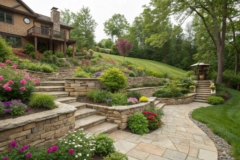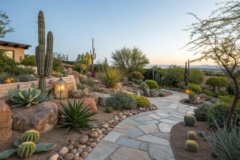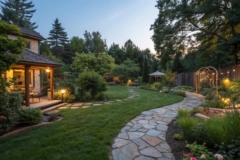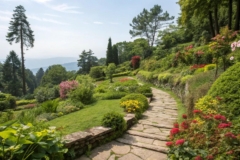1. Use Cacti for Low Maintenance
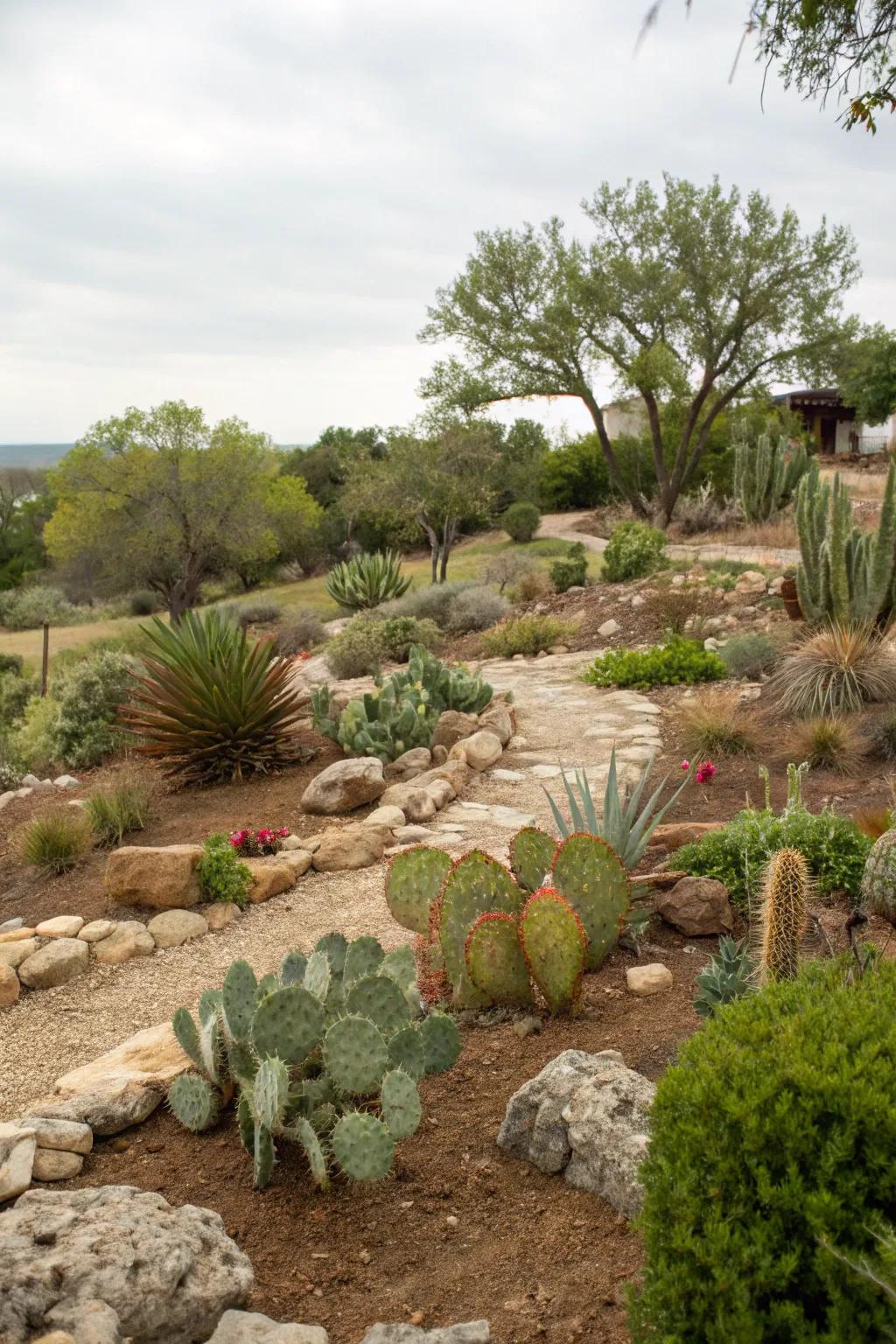
Cacti can be a striking addition for a low-maintenance garden. Their unique shapes and textures have always intrigued me.
A few things you might like:
- Large Outdoor Cactus Planter: Elevate your landscape with a stylish planter, perfect for showcasing your cacti collection.
- Cactus Soil Mix: Ensure healthy growth with a well-draining soil mix designed specifically for cacti.
- Cactus Fertilizer: Boost your cacti’s health with specially formulated fertilizer for optimal growth.
2. Design Terraced Gardens
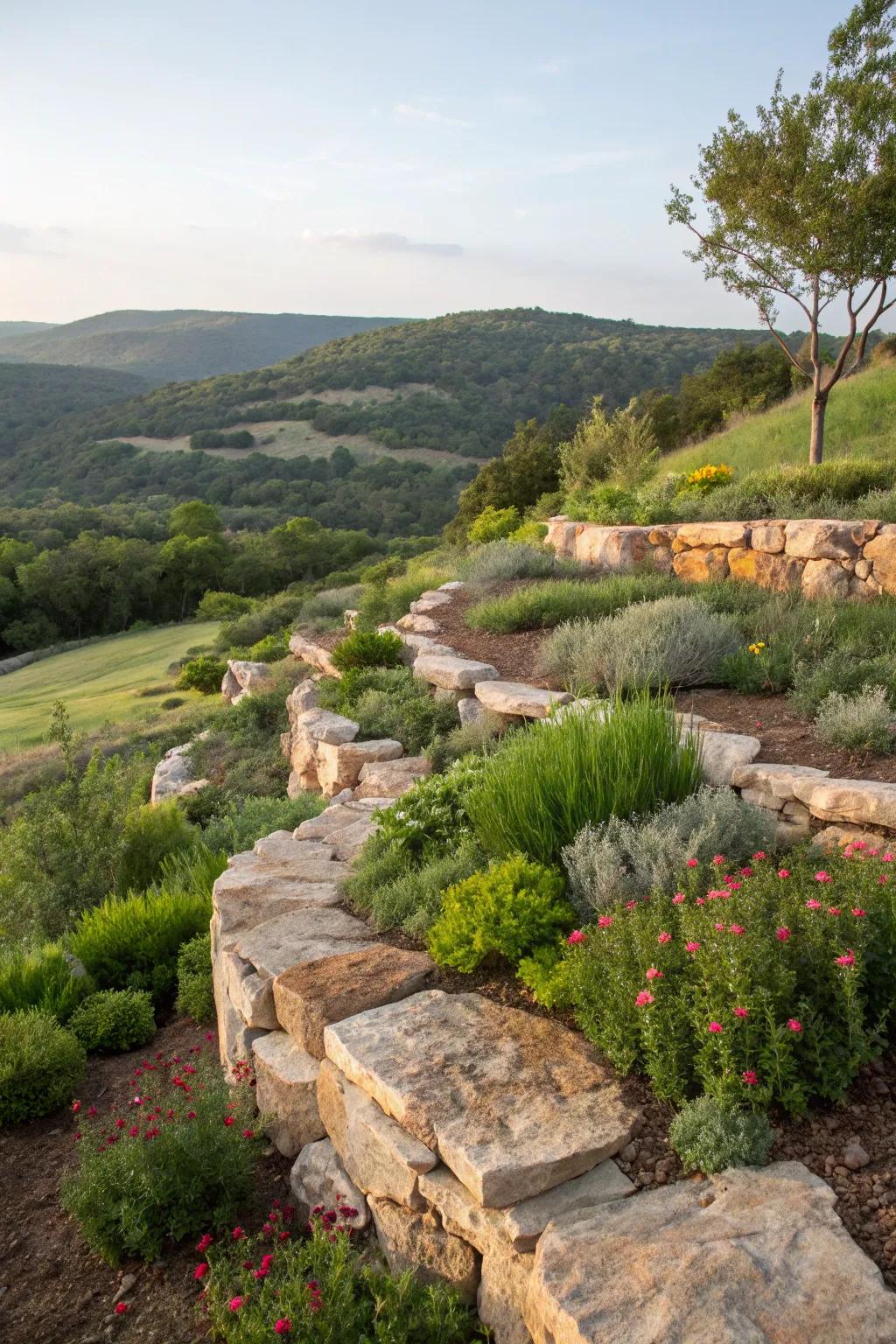
If you’re dealing with a slope, try using terraced gardens to manage elevation changes creatively. Incorporating rock borders adds structure and a touch of elegance, something I’ve loved experimenting with.
A few choices to try:
- Rock Garden Edging: Enhance your terraced garden with rock borders for a polished and elegant look.
- Slope Stabilization Mesh: Secure your terraced garden with stabilization mesh, ensuring soil retention and longevity.
- Perennial Plant Mix: Add vibrant color to your terraces with a mix of hardy perennial plants.
3. Integrate Water-Conserving Features
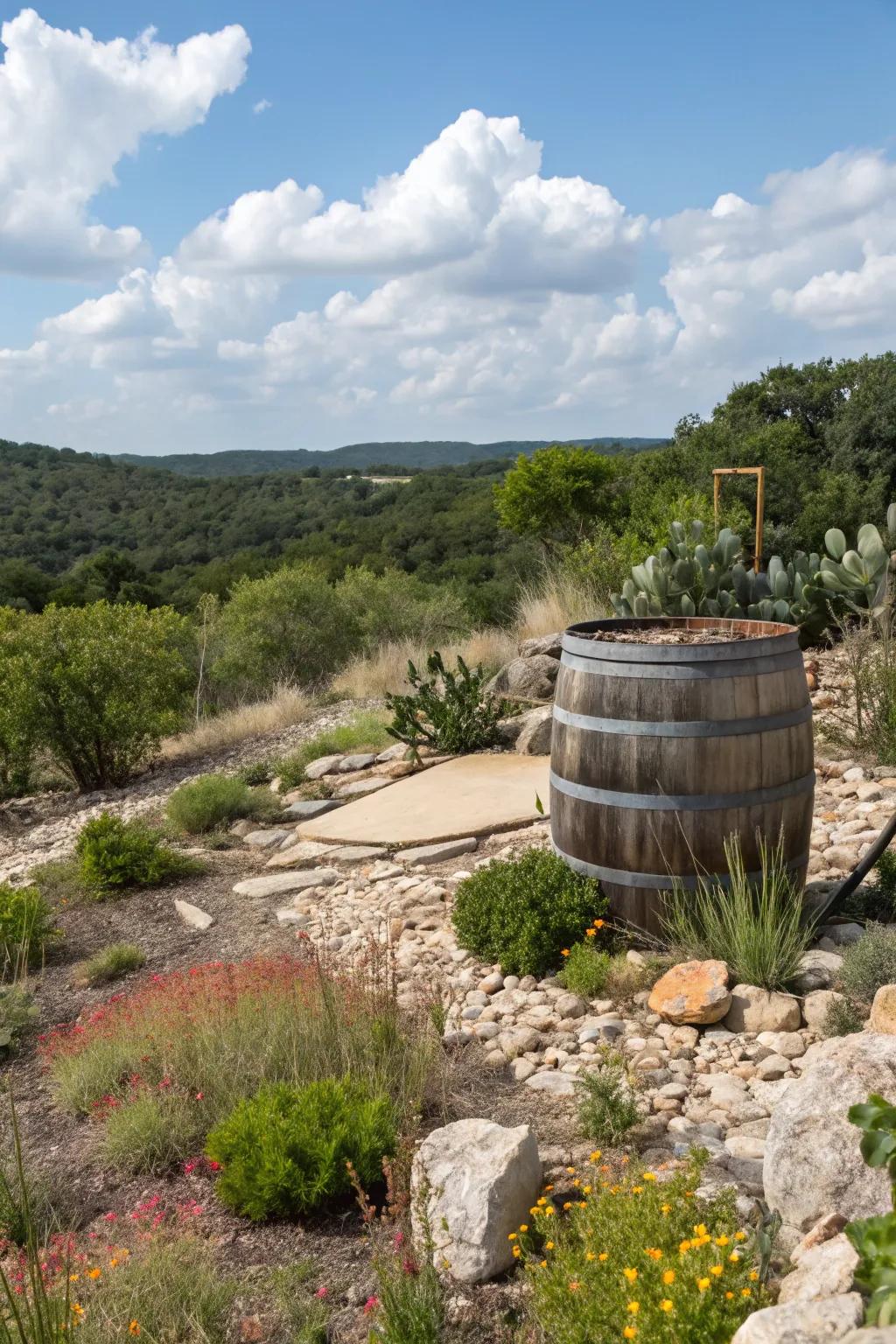
Incorporate water-conserving features like rain barrels to support a sustainable garden. These have helped me ensure that my landscapes thrive even in dry spells.
A few suggestions:
- Rain Barrel Collection System: Collect and store rainwater effortlessly to keep your garden thriving during dry spells.
- Drip Irrigation Kit: Optimize water usage by delivering moisture directly to plant roots, enhancing garden vitality.
- Watering Timer Controller: Automate your watering schedule to ensure efficient water use without manual effort.
4. Minimalist Design Approach
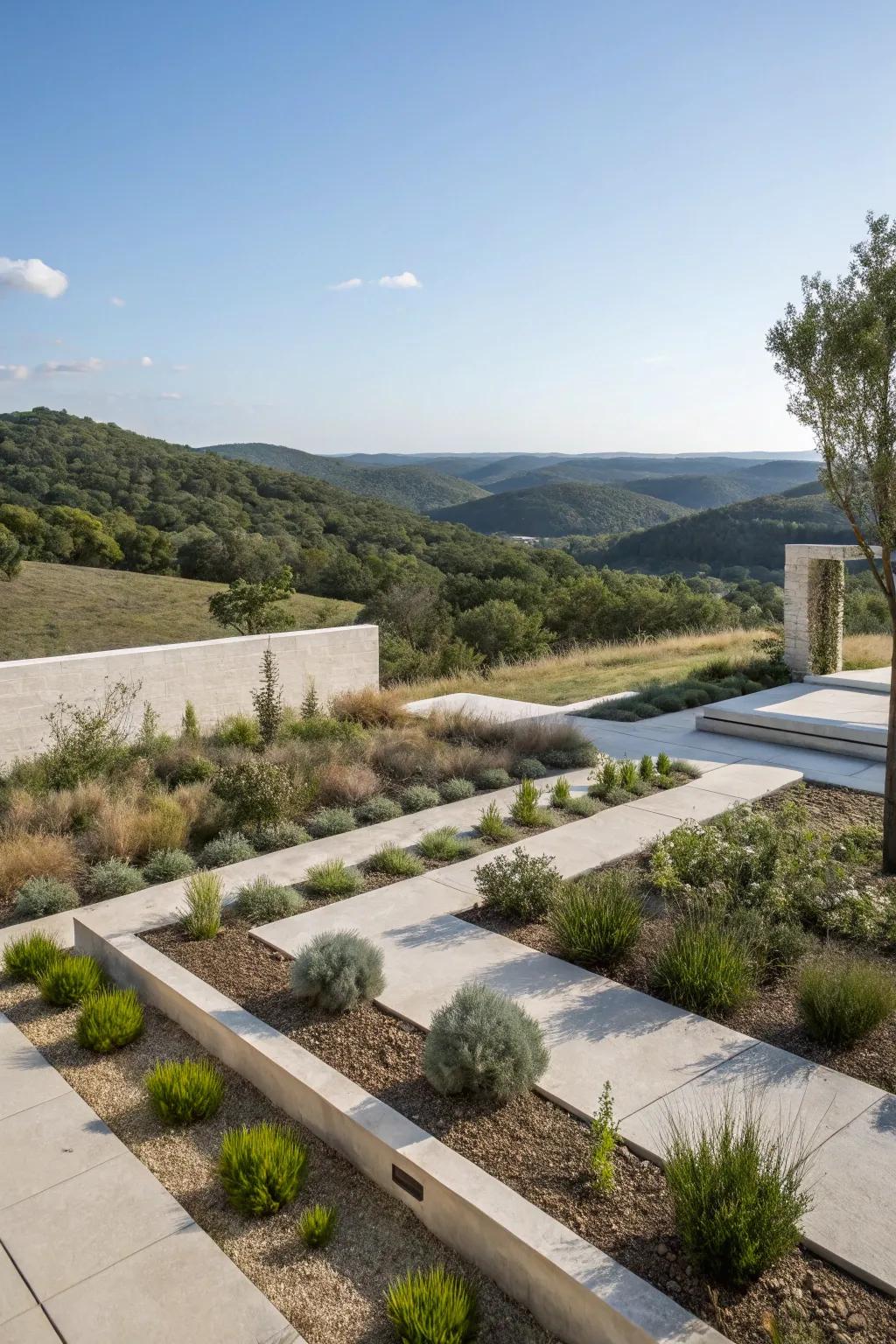
Opt for minimalist design to keep things simple and let the natural beauty shine. Clean lines and uncluttered spaces have a calming effect that I adore.
Give these a look:
- Outdoor Minimalist Planters: Enhance your garden with sleek planters to complement the natural landscape and serene ambiance.
- Solar Pathway Lights: Illuminate your paths with eco-friendly solar lights for a modern and minimalist touch.
- Modern Outdoor Benches: Provide seating while maintaining simplicity with modern benches that blend with the surroundings.
5. Install a Fire Pit Area
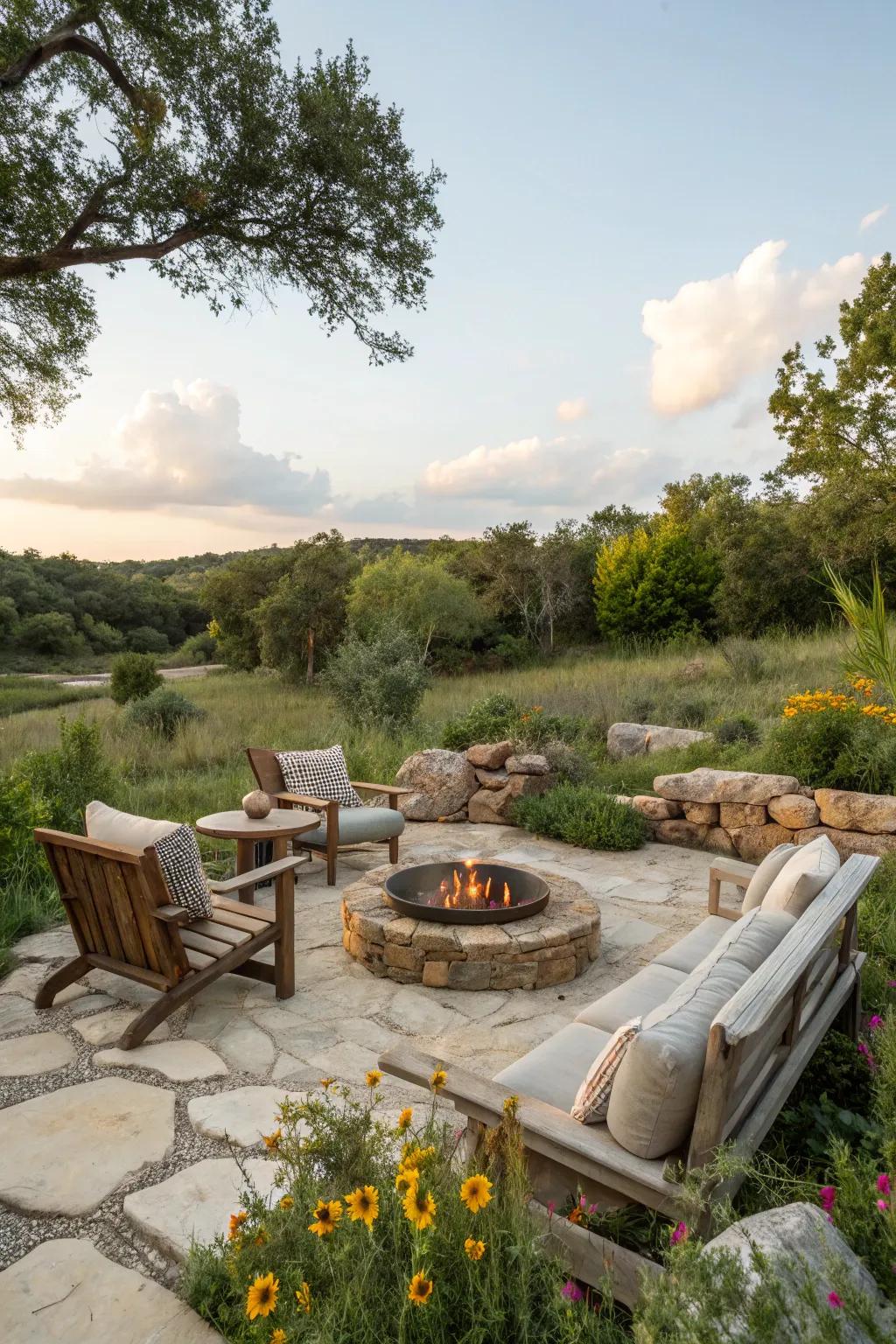
A fire pit area can be the perfect gathering spot for family and friends. I’ve seen how this can transform a backyard into a warm, inviting retreat.
Maybe worth checking out:
- Outdoor Fire Pit: Transform your backyard with a stylish fire pit—perfect for cozy gatherings and evening warmth.
- Weather-Resistant Patio Chairs: Enhance comfort around your fire pit with durable patio chairs for relaxing evenings outdoors.
- Decorative Throw Pillows: Add charm and comfort with decorative pillows, ideal for outdoor seating by the fire.
6. Create Winding Stone Pathways
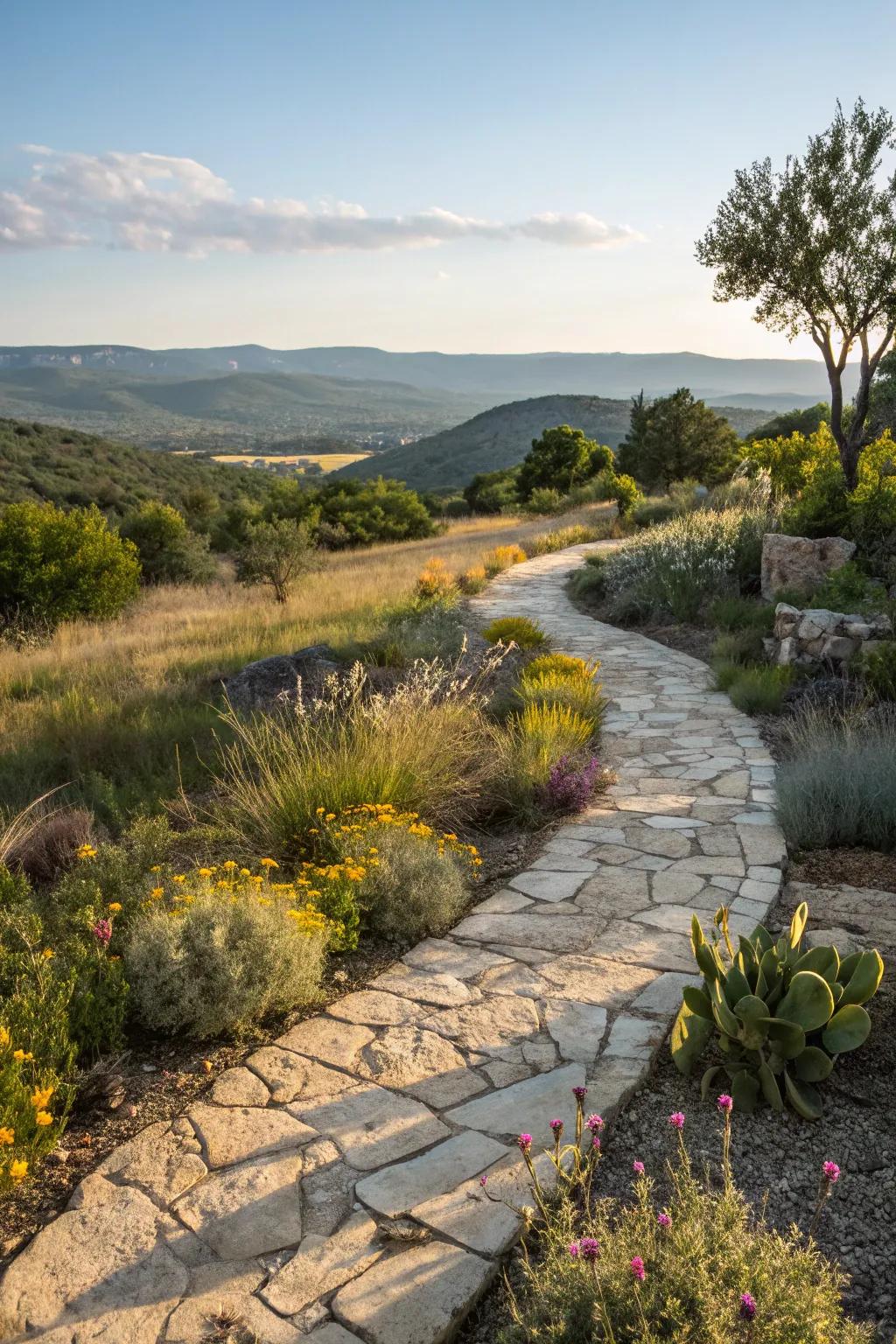
Consider incorporating natural stone paths that wind through your garden, giving it a rustic and inviting feel. I’ve found that using local stones really ties the design into the landscape beautifully.
Check if these fit your needs:
- Natural Stone Pavers: Enhance your pathway with durable, local stone pavers for a rustic, inviting garden feel.
- Garden Pathway Edging: Define your walkway using stylish edging, ensuring clean lines and a polished garden landscape.
- Pathway Lighting: Illuminate your stone pathway with solar-powered lights for an enchanting evening garden ambiance.
7. Rock Gardens for Texture
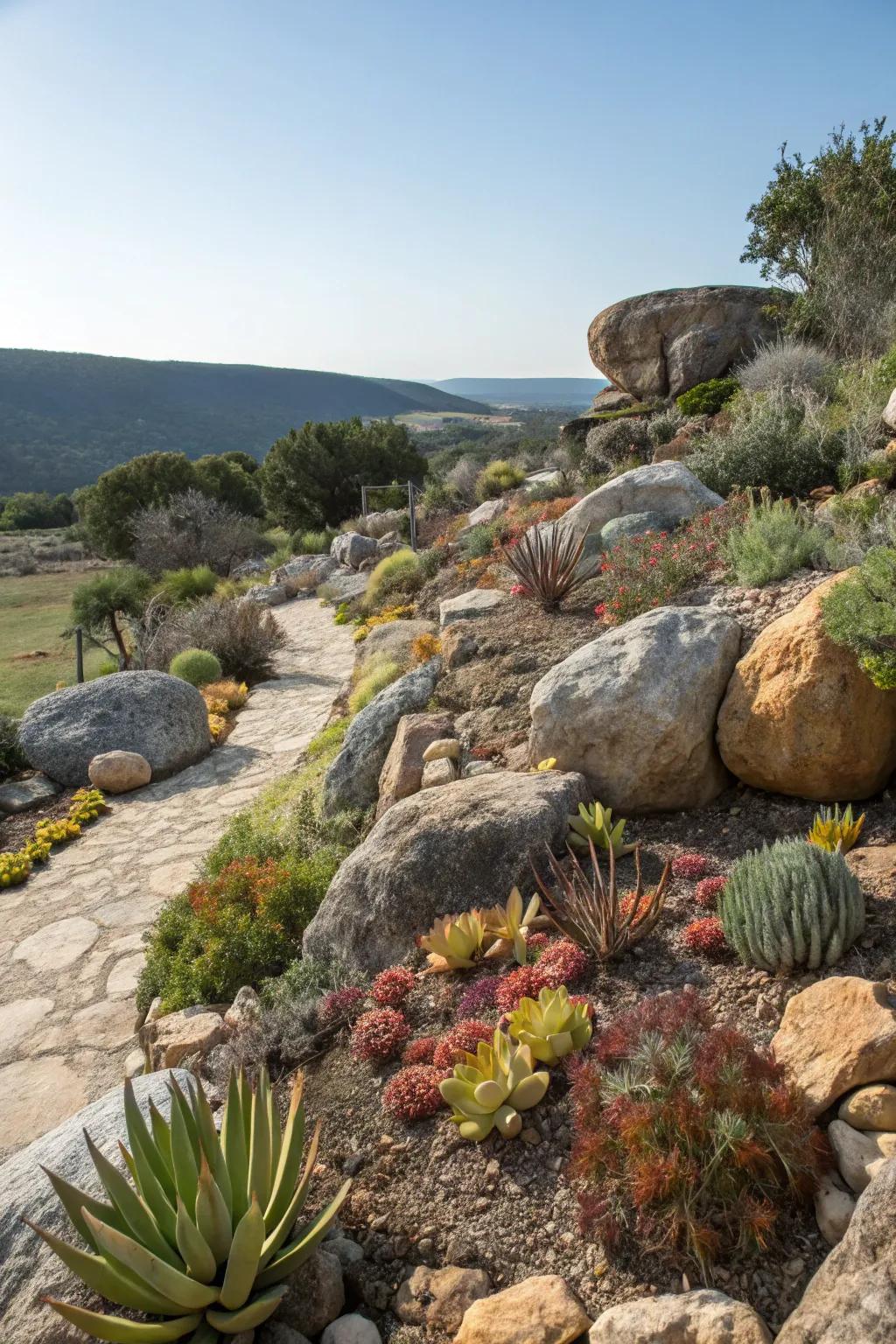
Consider creating rock gardens to add texture and interest to your space. Mixing rocks with hardy succulents has been a fun way to add layers and dimension.
You might give these a try:
- Set of Decorative Garden Rocks: Enhance your rock garden’s aesthetic with this set of natural decorative garden rocks.
- Hardy Succulent Plant Collection: Add vibrant color and texture to your rock garden with this hardy succulent plant collection.
- Rock Garden Design Guidebook: Explore inspirational design ideas with this comprehensive guidebook to rock gardens.
8. Mix Modern and Rustic Elements
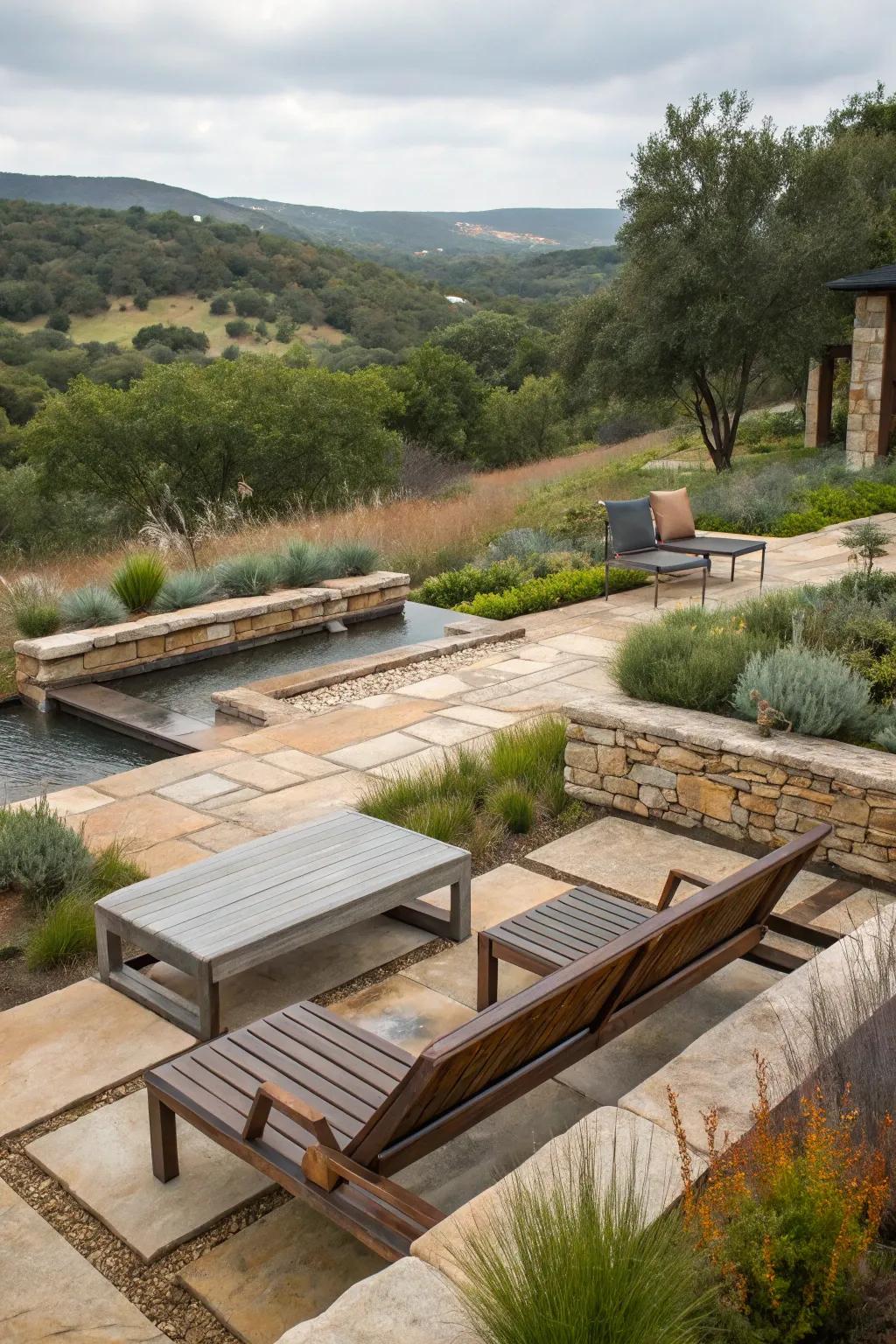
Blend modern and rustic elements for a unique aesthetic. This combination has allowed me to create spaces that are both timeless and contemporary.
These products might help:
- Reclaimed Wood Outdoor Bench: Add character and comfort to your patio with a handcrafted reclaimed wood outdoor bench today.
- Metal and Wood Patio Table: Elevate your outdoor space with a chic metal and wood patio table for stylish gatherings.
- Stone Planters for Landscaping: Complement your garden with rustic stone planters, enhancing natural beauty and charm effortlessly.
9. Shaded Seating Nooks
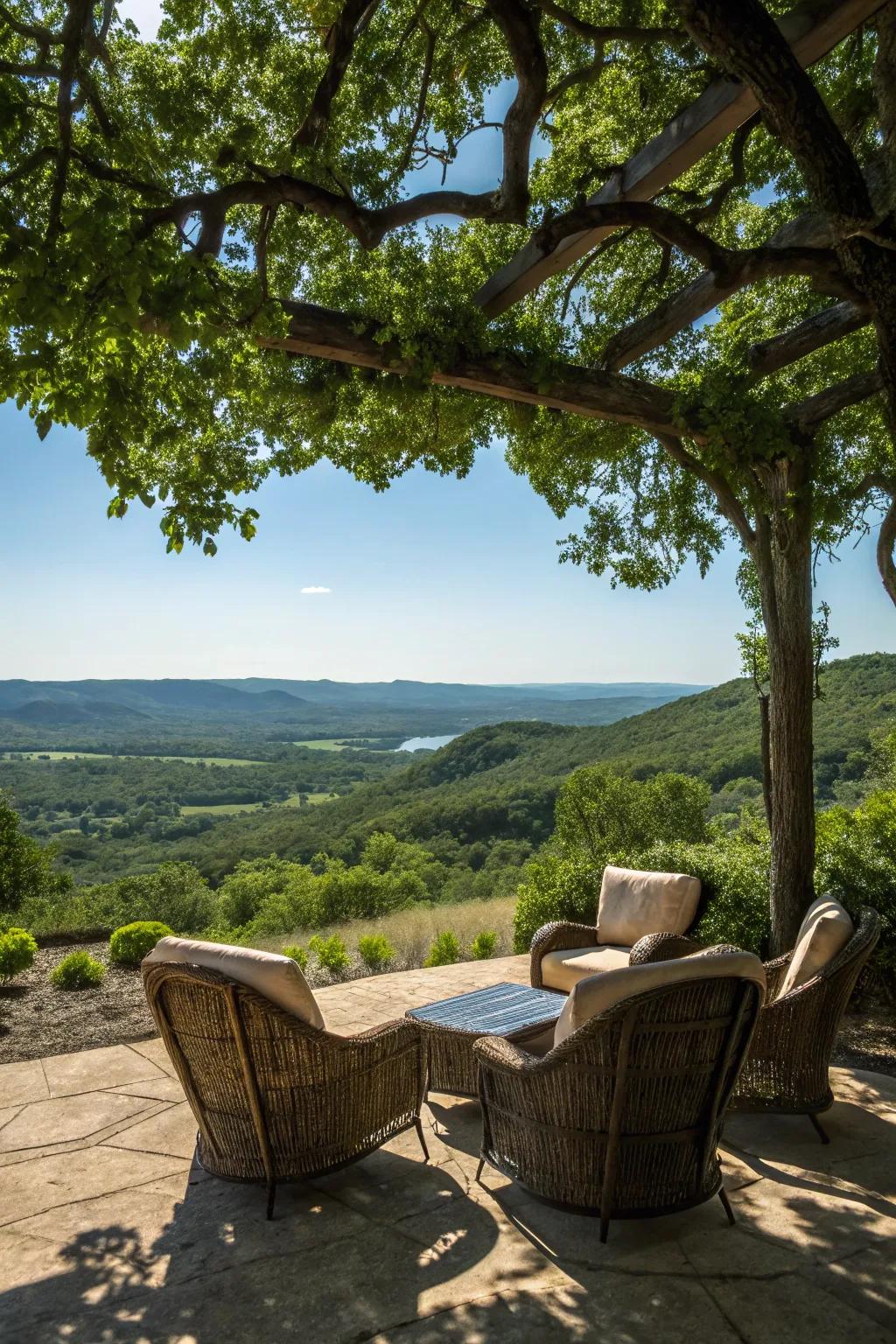
Build shaded seating areas where you can relax and enjoy the views. A shaded nook is my personal favorite spot for morning coffee.
May just do the trick:
- Outdoor Wicker Lounge Chairs: Elevate your relaxation with stylish wicker chairs, perfect for enjoying serene hill country views.
- Wooden Pergola Kit: Create a cozy, shaded nook with an elegant pergola for morning coffee or evening relaxation.
- Durable Outdoor Coffee Table: Add functionality and style with a sturdy coffee table, ideal for outdoor gatherings and relaxation.
10. Incorporate Metal Accents

Add metal accents like garden sculptures or planters for a modern touch. I love how these can add a bit of sparkle and contemporary flair.
Items that may come in handy:
- Metal Garden Sculpture: Enhance your garden’s modern look with a sleek metal sculpture for a dazzling touch.
- Metal Planter for Outdoors: Elevate your flowers with chic metal planters, adding both height and elegance to your garden.
- Garden Wind Spinner: Introduce dynamic movement and shine to your space with a captivating metal wind spinner.
11. Add Rustic Structures
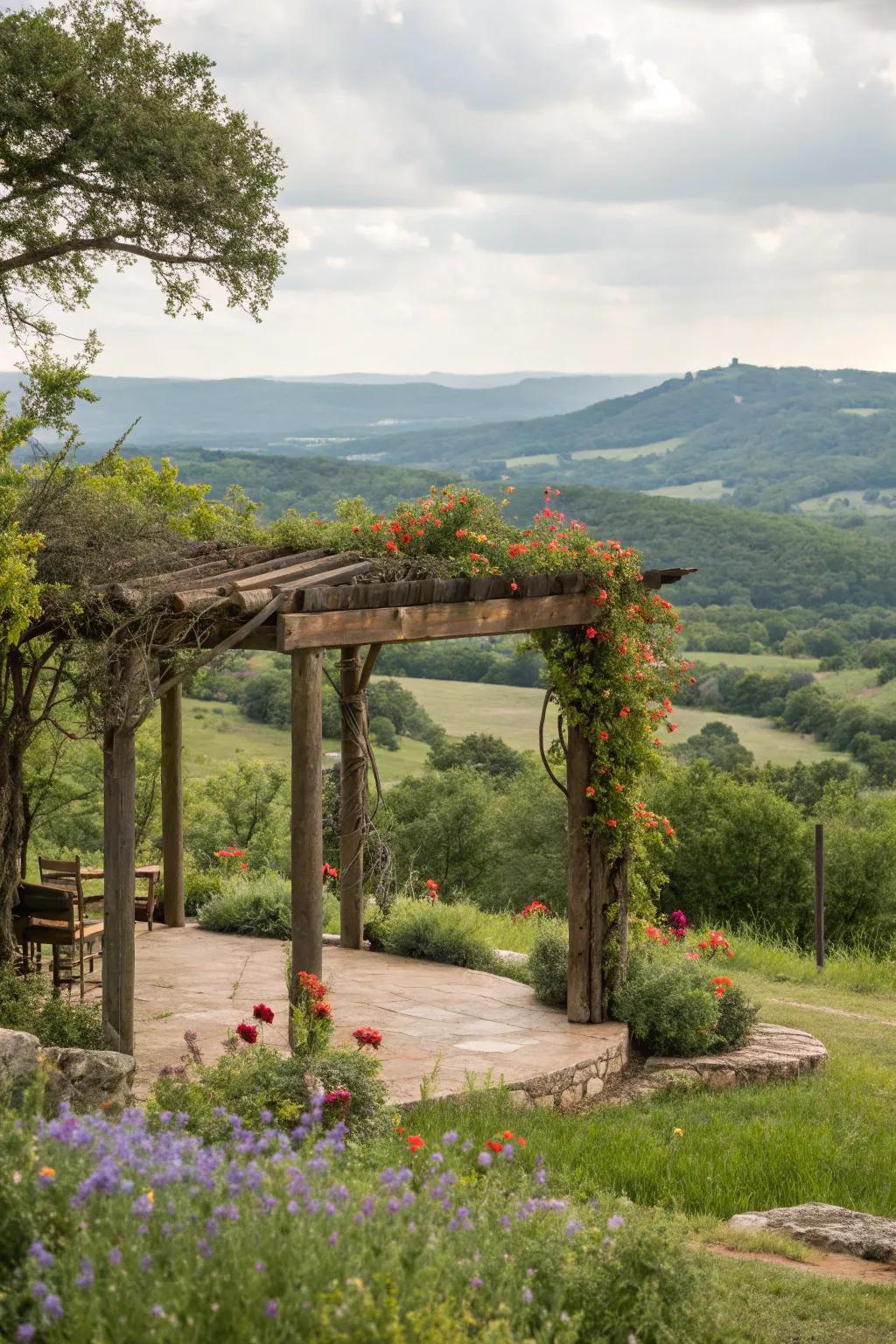
Incorporate simple, rustic structures like pergolas or sheds to blend with the natural surroundings. I’ve seen how these can create cozy spots that feel like an extension of the home.
Useful items to consider:
- Wooden Pergola Kit: Enhance your garden’s charm with a rustic pergola; a perfect blend with nature. Order now!
- Rustic Outdoor Furniture Set: Create a cozy outdoor haven with a rustic furniture set that complements natural landscapes.
- Garden Shed with Wooden Finish: Add character to your garden with a rustic wooden shed; functional and stylish. Explore now!
12. Create a Dry Creek Bed
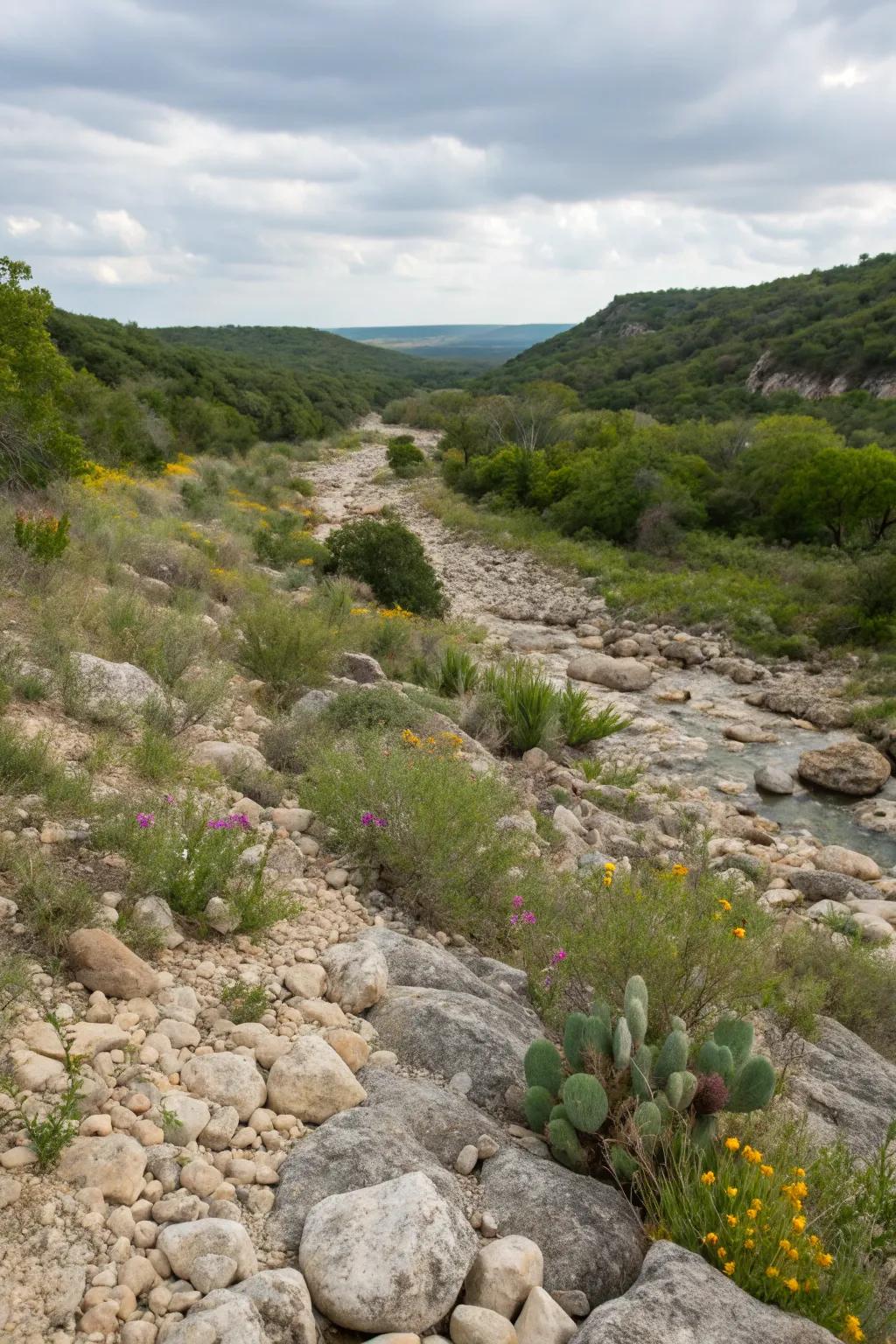
Design a dry creek bed for visual interest and natural drainage. This feature has been both practical and beautiful in my projects.
Might be a good match:
- Decorative River Rocks: Enhance your dry creek bed with these natural river rocks for a realistic landscape design.
- Drought-Tolerant Plants: Choose drought-tolerant plants to complement your dry creek bed with vibrant, sustainable greenery.
- Landscape Fabric: Use landscape fabric under your dry creek bed to prevent weed growth and ensure durability.
13. Border Planting for Impact
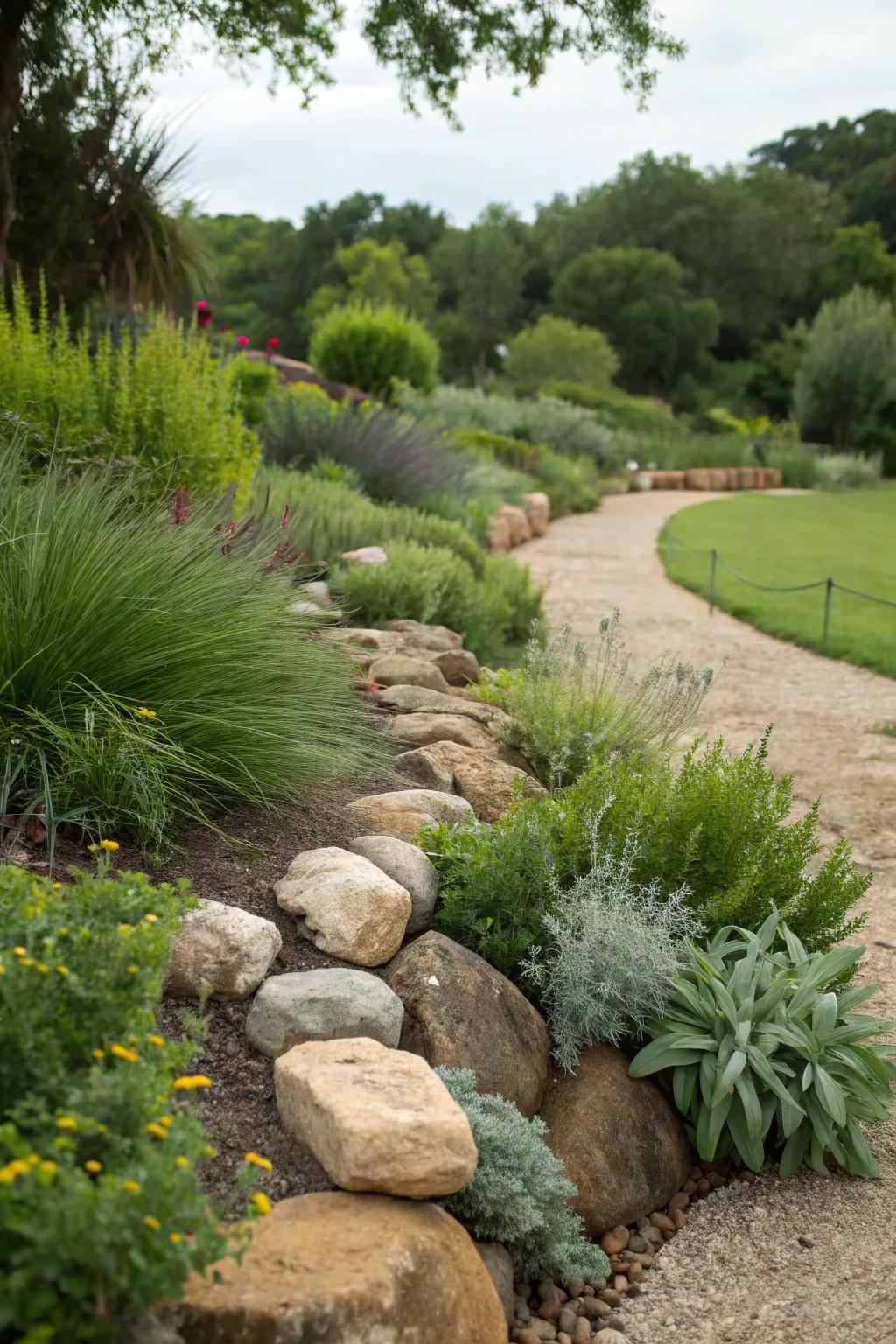
Use border planting with native plants or stones for a defined look. This technique has helped me create visually striking boundaries in my designs.
Some ideas to consider:
- Native Plant Seed Mix: Enhance your garden with native seeds for a natural, beautiful landscape border.
- Decorative Garden Stones: Define your landscape edge with decorative stones for a refined and elegant touch.
- Drip Irrigation Kit: Install a drip irrigation kit to ensure consistent watering for your border plants.
14. Create a Natural Pond
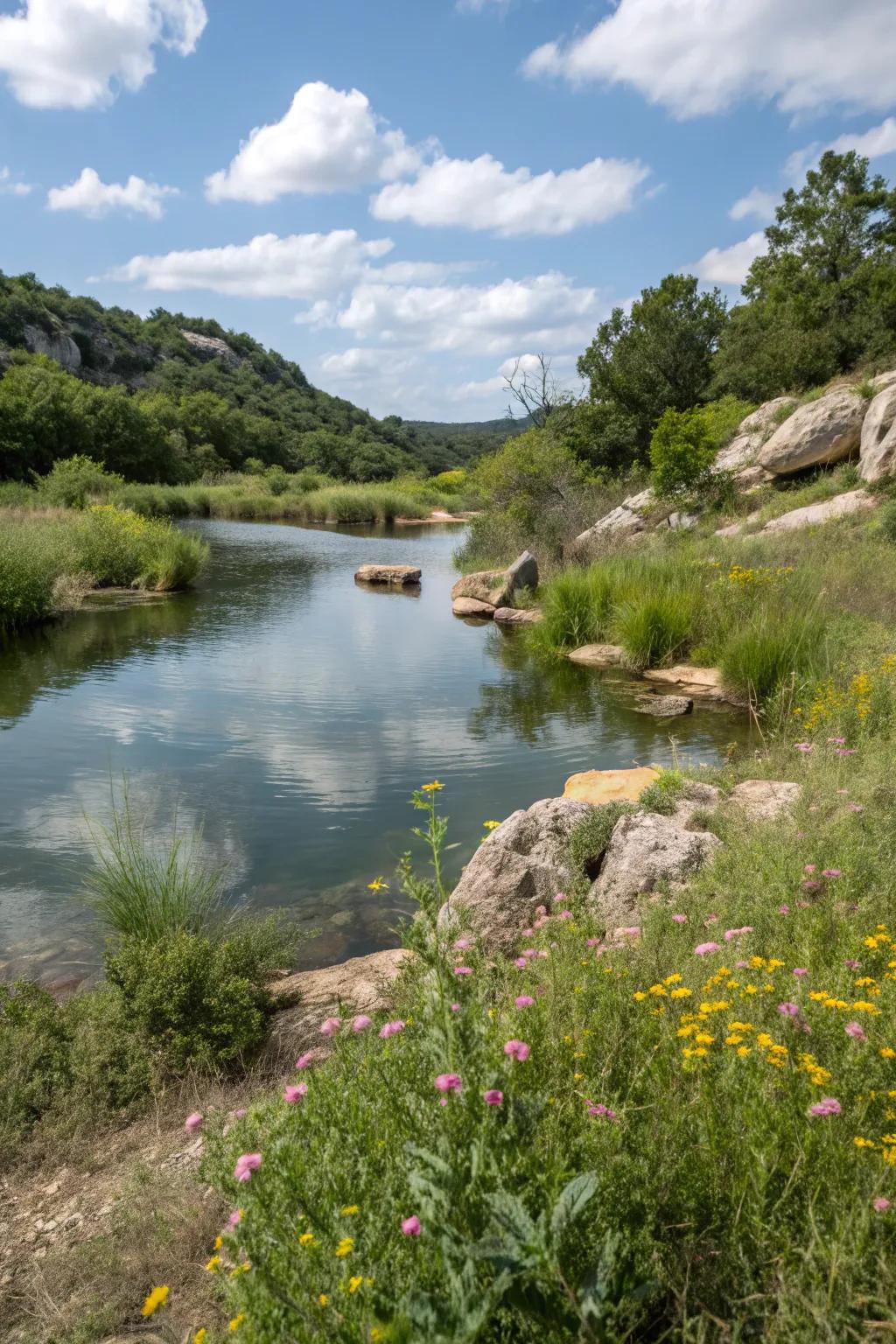
Consider a natural pond to attract wildlife and add serenity. The gentle trickle of water has always been a soothing element in my gardens.
Try these:
- Pond Liner: Install a durable pond liner to create a reliable water feature, attracting local wildlife effortlessly.
- Solar Pond Pump: Enhance your pond with an eco-friendly solar pump, ensuring water circulation and tranquility.
- Aquatic Plants: Add vibrant aquatic plants to enhance biodiversity and natural beauty in your garden pond.
15. Use of Limestone Features

Integrate limestone features into your design for a classic Hill Country look. I’ve found that limestone blends seamlessly with the natural terrain.
Possibly helpful picks:
- Limestone Garden Edging Stones: Enhance your landscape with limestone edging that mimics natural terrain beautifully. Perfect for paths and borders.
- Outdoor Limestone Pavers: Design striking pathways and patios using limestone pavers that blend with Texas Hill Country aesthetics.
- Limestone Rock Retaining Wall Blocks: Construct attractive retaining walls using limestone blocks for a classic Hill Country look in your garden.
16. Vertical Gardens for Smaller Spaces
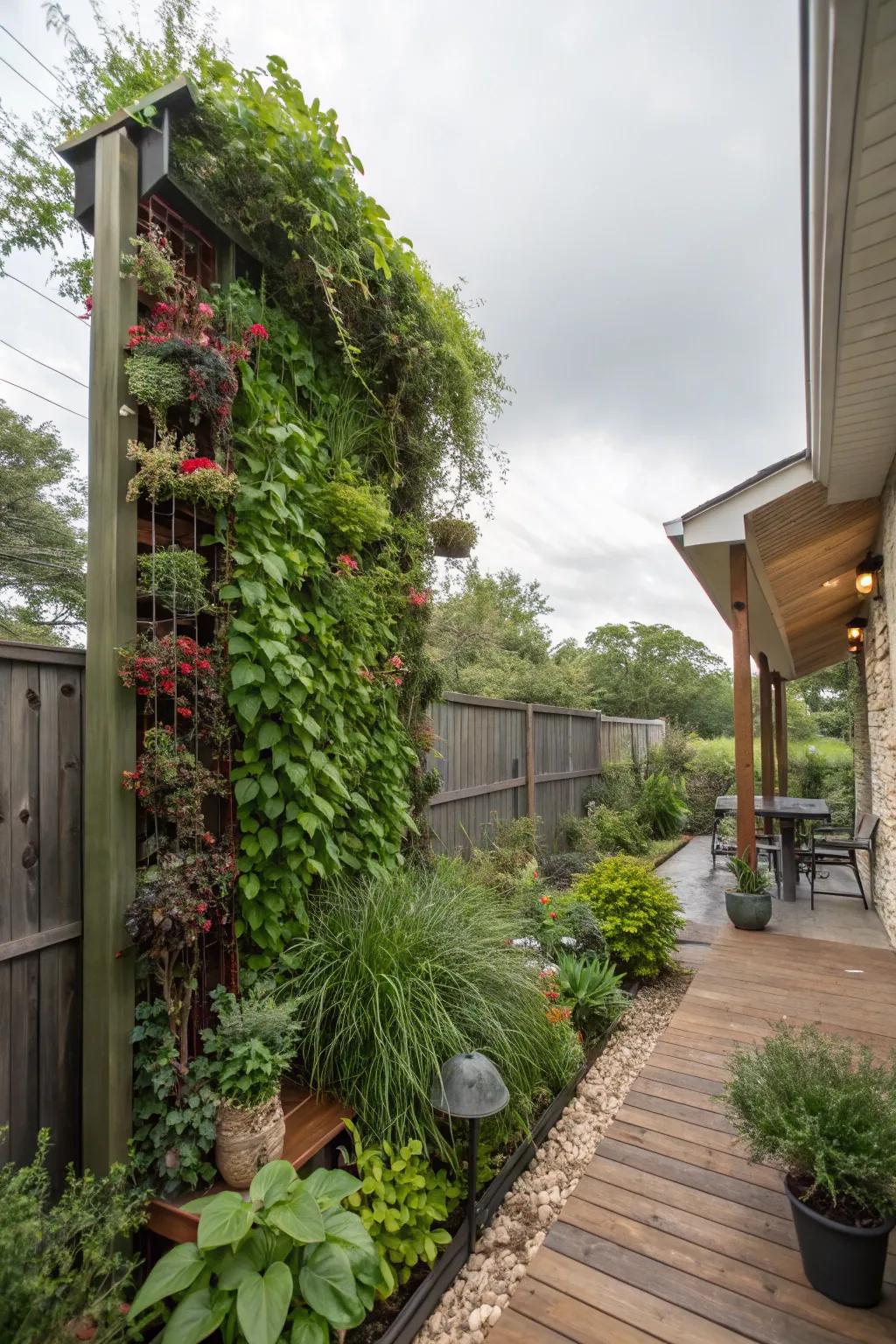
Try vertical gardens to add greenery to smaller spaces. They’re a clever way to maximize space and create lush walls of plants.
Some handy options:
- Wall-Mounted Vertical Garden Planters: Transform your space with wall-mounted planters, perfect for creating lush vertical gardens anywhere.
- Vertical Plant Stand for Outdoor Use: Elevate your garden with a vertical stand, adding layers of greenery to small areas.
- Self-Watering Vertical Garden System: Simplify your gardening with a self-watering system, ensuring your plants thrive effortlessly.
17. Wildflower Meadows
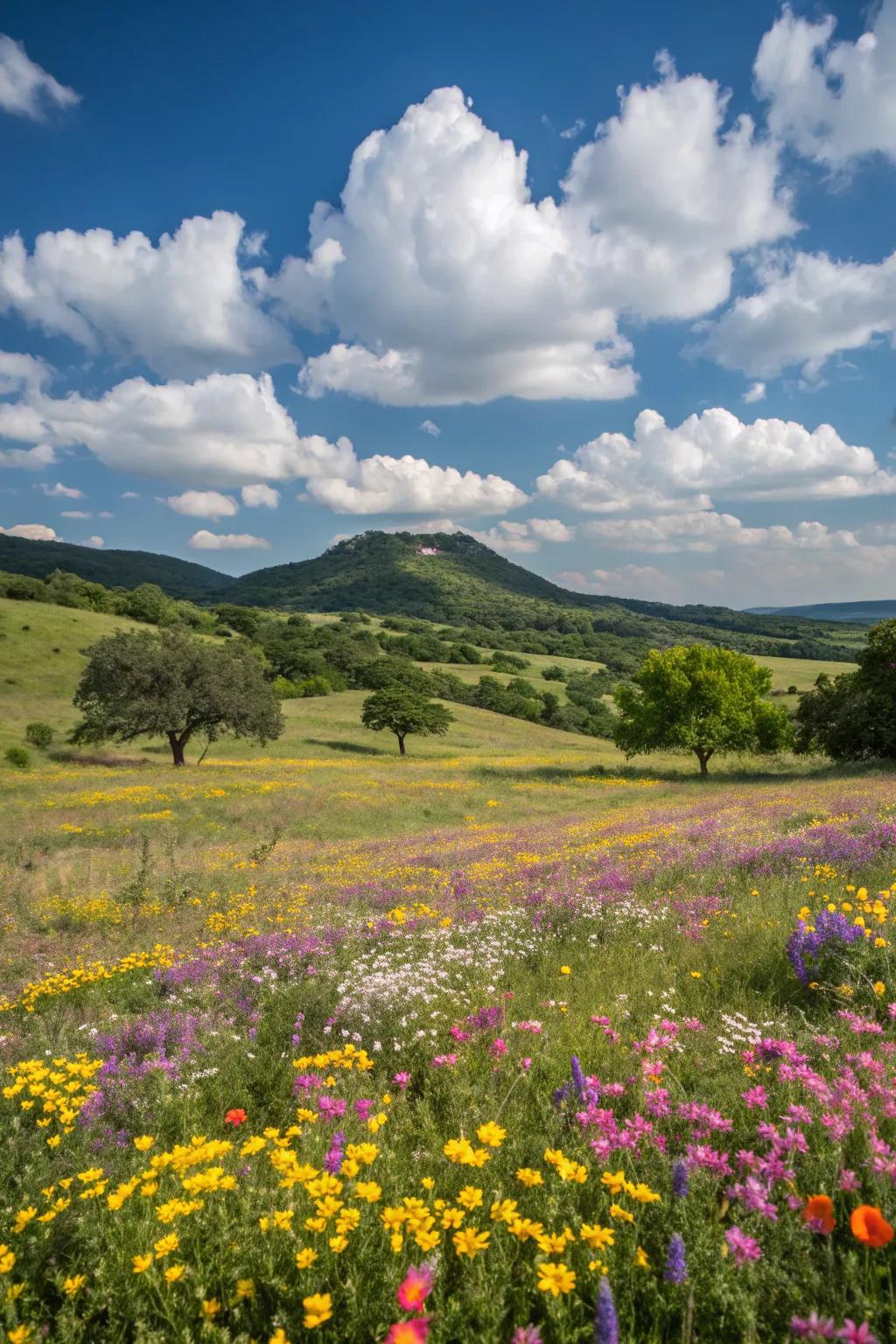
Introduce wildflower meadows for a burst of color and movement. Watching these bloom is like having a little piece of the Hill Country right at home.
Possibly handy products:
- Wildflower Seed Mix: Transform your garden with a vibrant wildflower mix. Enjoy colorful blooms throughout the season.
- Garden Trowel Set: Cultivate your meadow efficiently with this durable garden trowel set, ideal for all soil types.
- Eco-Friendly Mulch: Protect and nourish your wildflowers with eco-friendly mulch. Enhance soil health and moisture retention.
18. Embrace Native Plants
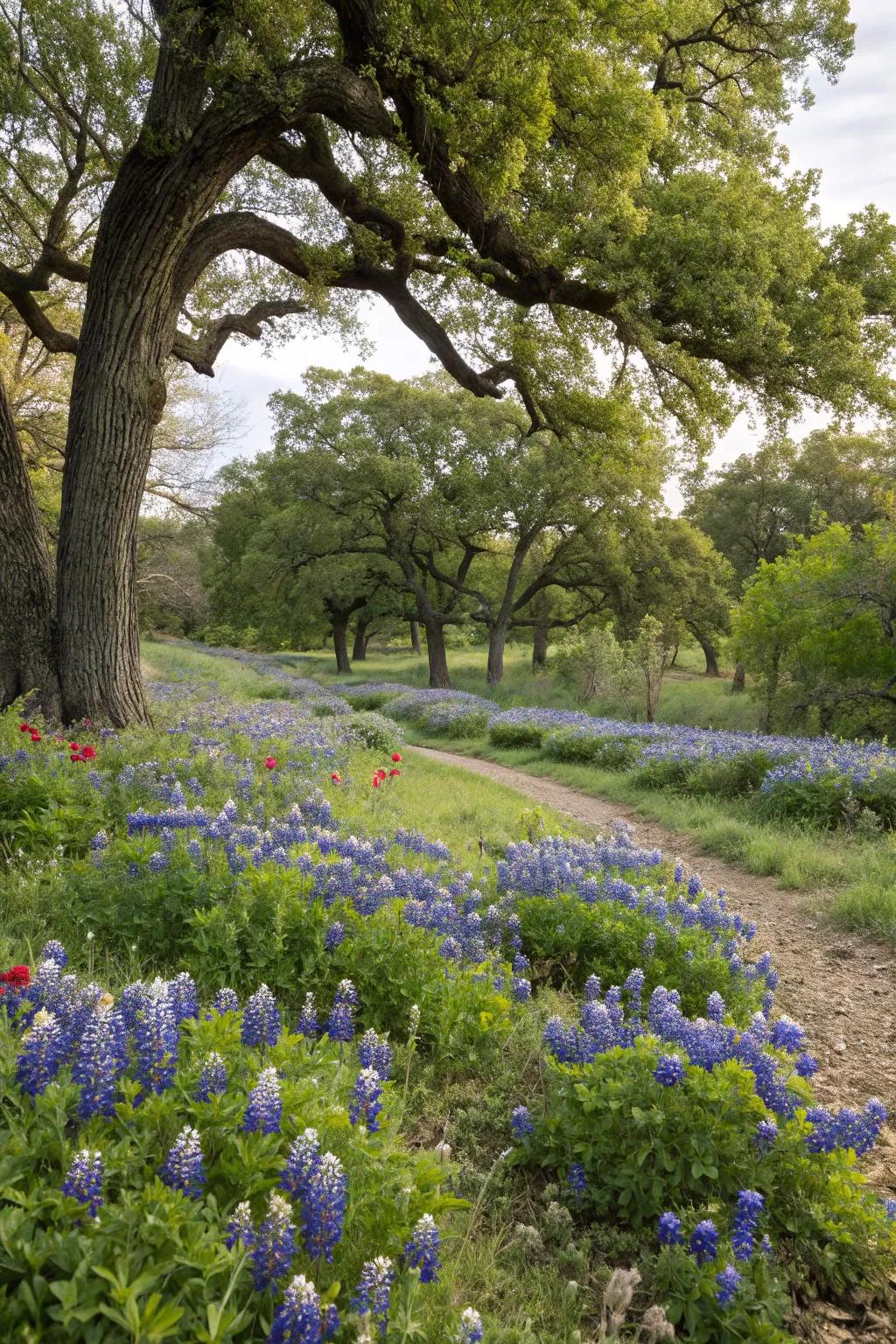
Choose drought-resistant native plants like bluebonnets and live oaks to ensure your garden thrives in the Texas climate. These plants have been my go-to for creating sustainable and low-maintenance landscapes.
Products that could assist:
- Native Plant Seed Mix: Enhance your garden with a Texas-native seed mix for a vibrant, drought-resistant landscape.
- Drought-Resistant Fertilizer: Boost plant health with fertilizer designed for drought conditions, perfect for native Texas landscapes.
- Automatic Drip Irrigation Kit: Ensure efficient watering with a drip irrigation kit, ideal for minimizing water use in native gardens.
19. Install Garden Lighting
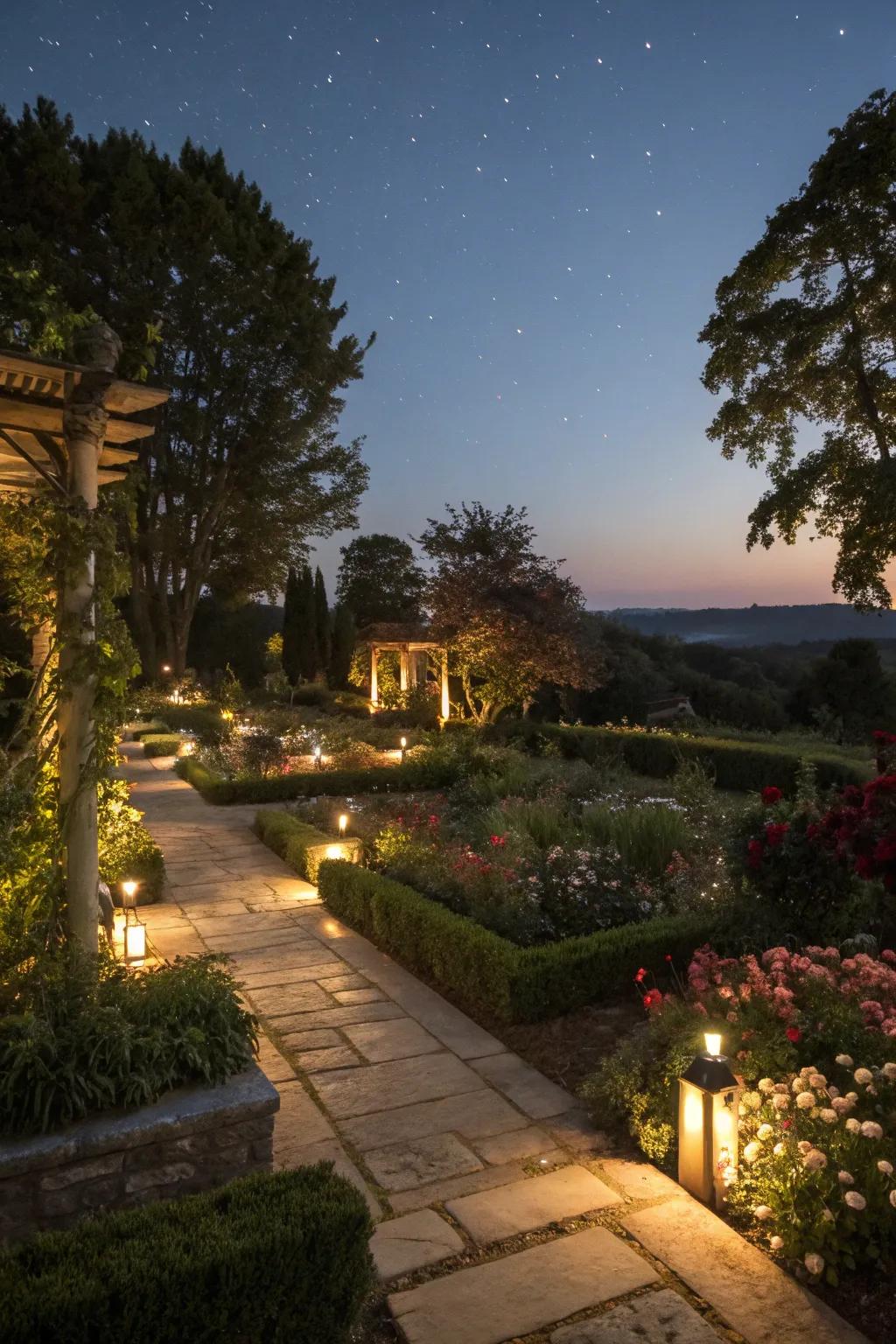
Add garden lighting to highlight pathways and features at night. The ambiance created by soft lighting is simply magical.
Explore these options:
- Solar Pathway Lights: Illuminate your garden pathways effortlessly with eco-friendly solar lights for a magical night ambiance.
- LED Spotlights: Highlight beautiful features in your garden with adjustable LED spotlights for a stunning effect.
- Ambient String Lights: Create an enchanting atmosphere with ambient string lights that add charm to any garden area.
